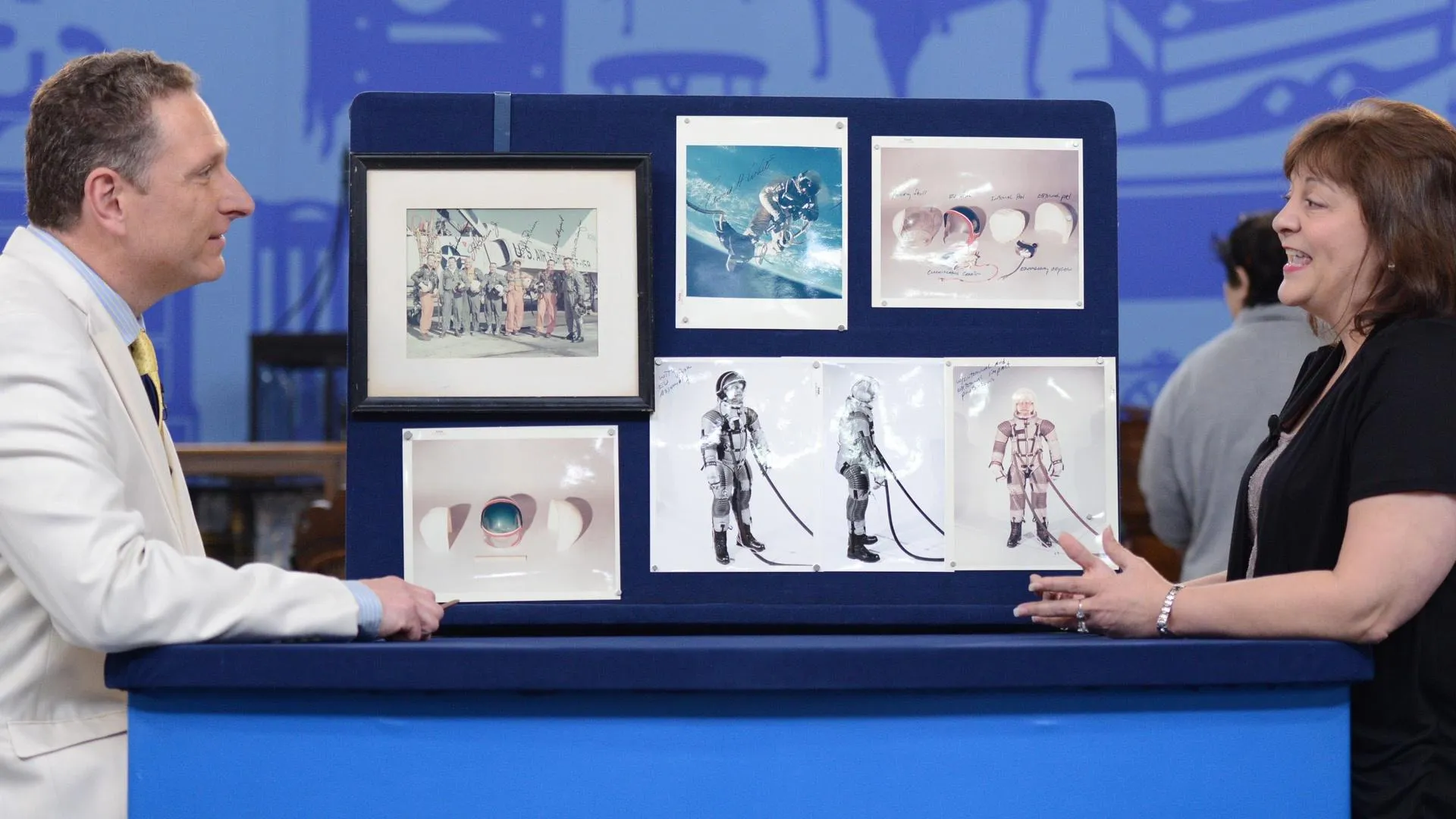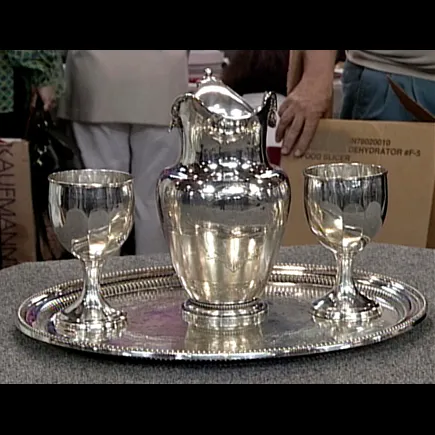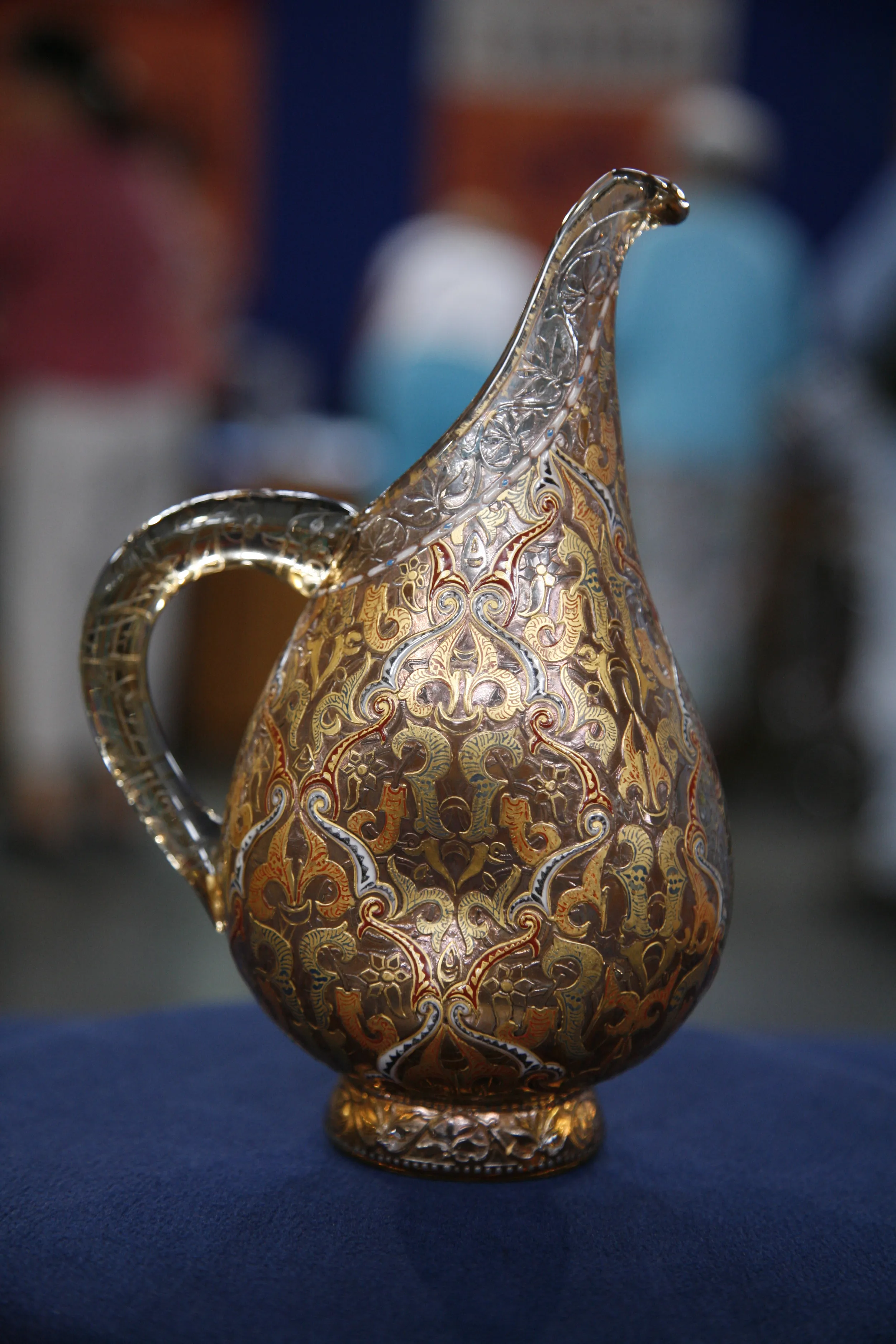GUEST: I know that it's been in the family since about, I don't know, at least the 1800s, the late 1800s. It belonged to my mother-in-law's aunt.
APPRAISER: This was made by the Pickard Decorating Company, which is in Chicago, and let's take a look at the bottom and see the marks. There's two marks here. There's one in green which says "D&C France." You might say, "Well, you say it was made in Chicago. Why does it say France?" The Pickard Company bought plain white china blanks from various factories around the world, especially from France and Germany and other countries, and then they employed highly skilled artists who would then hand-paint them. The other mark, which says "Handpainted Pickard China," means that they hand-painted it in their factory by one of their artists. So most hand-painted Pickard pieces like this have an artist's signature on it, so we always have to look for that. Now, sometimes it's missing and sometimes it's hard to find, but in this case, we found it. It's really hard to see.
GUEST: Well, I didn't notice it.
APPRAISER: Right here on the edge is a little bitty mark. There were dozens and dozens of artists who worked there over the years, and this particular artist's name was Minnie Pickard. She had the same last name as the company. She married into the family. Now, when we look at hand-painted Pickard like this, which usually dates sometime between around 1900 through the 1920s-- this would be right in the middle of that time period-- what we collectors like and what we look for is the pattern. The more colorful, the more beautiful the pattern, the more unusual the pattern, and for some reason-- and we don't really know why-- Minnie Pickard is, like, the most desirable of all the many artists that worked there.
GUEST: Oh, wow.
APPRAISER: Now, she's not necessarily a better artist, but she's just more valuable. But I was told years ago that the reason she's worth more money is because she has a lot of descendants and they all bid on her china when it comes up because they only want her pieces and they will pay a lot of money. Now, I can't prove that that's true or not true, but she does bring a lot more. A pitcher like this would normally bring, with lots of wonderful flowers on it, somewhere in the $250 to $500 range.
GUEST: Right.
APPRAISER: But her stuff brings a lot more, so a retail price for this would be somewhere between $1,000 to $1,500.
GUEST: Oh, that's wonderful.







